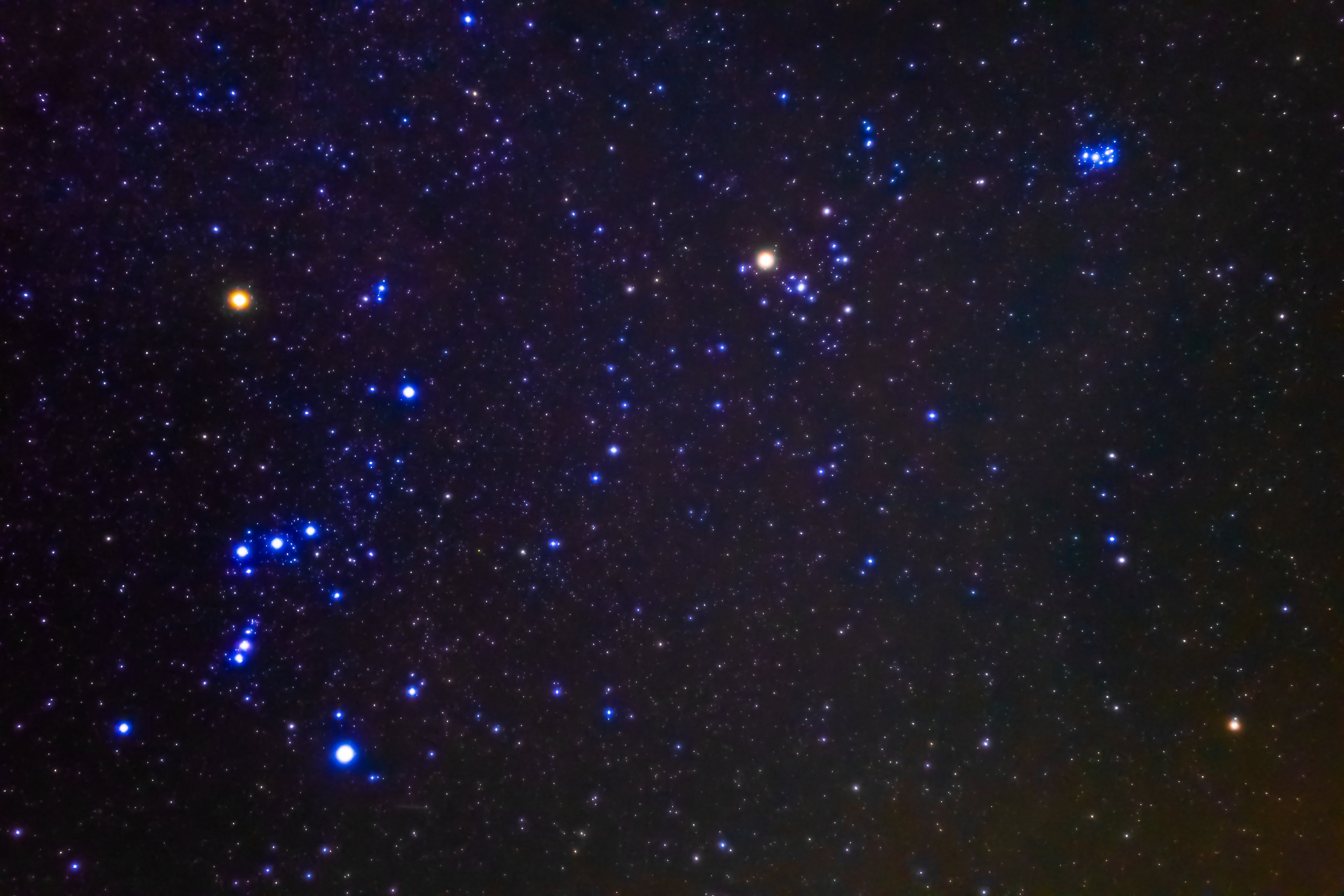Stargazing in January: Brilliant stars and astronomical goodies
There’s no better time to take up stargazing than the dawn of a new year – the darkness comes early and the winter skies are spectacular, writes Nigel Henbest

So, the festivities are over and we’re getting our heads stuck down into the nitty-gritty of everyday life. But it doesn’t have to be this way. Instead, let’s take inspiration from the words of Oscar Wilde: “We are all in the gutter, but some of us are looking at the stars.”
And there’s no better time to take up stargazing than the new year. It gets dark so early that even the youngest kids can get out to enjoy the sky, and none of us need lose any sleep. Winter also treats us to the most spectacular skyscapes of the year, filled with brilliant stars and other astronomical goodies.
Also, you may have been given a stargazing guide for Christmas, or even a telescope. So – wrap up warm, and let’s step out into the star-spangled night.
First, look over to the southeast for the constellation of Orion, the great hunter. Along with the Plough (over in the northeast these nights), it’s the star pattern that’s most familiar to people. Perhaps that’s not surprising: this single constellation contains one-tenth of the 70 brightest stars in the sky.
His humanoid outline is centred on the three stars of Orion’s belt. Below, the hem of his tunic is depicted by two stars, one of them brilliant blue-white Rigel. And above the belt two more stars – including the schoolkids’ favourite, reddish Betelgeuse (“Beetle-juice”) – mark his shoulders.
A year ago, I reported how Betelgeuse was dimming dramatically, and some commentators suggested this giant star – a thousand times wider than our sun – was undergoing internal convulsions and was about to blow itself apart as a supernova. Well, as you can see for yourself, Betelgeuse is still with us.
Astronomers now think that late in 2019, the star belched out a vast cloud of thick dust, which temporarily hid much of its glowing surface.
Follow the stars of Orion’s belt to the upper right, and you’ll find a rather smaller giant star, orange Aldebaran. “Smaller” a relative term: this star is still 44 times the diameter of the sun. Aldebaran marks the “eye” of Taurus (the Bull), with the neighbouring star cluster of the Hyades depicting his head. Follow our imaginary line further up, and you’ll come to a compact cluster of scintillating stars, the Pleiades, more romantically known as the Seven Sisters.
Run your eye up from Sirius to Procyon, and higher still, to spot Castor and Pollux. These stars represent the heads of twin heroes of Greek myth, their bodies marked by parallel lines of stars running to the right, making up the star pattern of Gemini (the Twins).
Finally, almost overhead, there’s another jewel of the winter nights. This lovely star’s name, Capella, means “the little nanny goat”, though the amalgamation of different sky myths means that it’s part of the constellation of Auriga, the Charioteer. Traditional star maps depict a charioteer riding into battle with a goat incongruously perched on his shoulder!
And on a really dark night, free from streetlights and the glare of the moon, there’s one more glorious sight on display. Threading through the winter constellation runs the softly glowing band of the Milky Way, bespangled with nebulae and star clusters.
What’s up
After their epochal close encounter last month, the giant planets Jupiter and Saturn are sinking down into the evening twilight, and setting around 6pm in the southwest. Mercury joins them for much of January. The innermost planet moves upward past Jupiter on 11 January, and there’s a lovely sight after sunset on 14 January when the crescent moon forms a striking tableau with these three worlds.
Mars is high in the southwestern sky, shining more brilliantly than any star apart from Sirius. Compare the steady ruddy tint of the red planet with the twinkling white brilliance of the Dog Star.
If you’d like to catch another planet in the evening sky, take a pair of binoculars and scan just to the lower left of Mars on 21 January. The faint “star” you’ll find here is the seventh planet, Uranus. It’s just visible to the naked eye, but only with really dark skies, and is easiest to locate with binoculars and with the help of a convenient bright signpost like Mars.
To complete your roster of the planets visible to the unaided eye (all bar Neptune), check out the southeastern sky before dawn. Venus is more brilliant than any of the stars when it rises about 6.30am. The Morning Star has kept early risers company for many months now, but by the end of January it has plunged down into the dawn twilight and disappeared from view.
Diary
11 January (am): crescent moon near Venus
13 January, 5am: new moon
14 January: crescent moon near Mercury, Jupiter and Saturn
20 January, 9.01pm: first quarter moon near Mars
21 January: Mars close to Uranus and the moon
22 January: moon near the Pleiades
23 January: moon between Aldebaran and the Pleiades
24 January: Mercury at greatest elongation east
27 January: moon near Castor and Pollux
28 January, 7.16pm: full moon
29 January: moon near Regulus
‘Philip’s 2021 Stargazing’ (Philip’s £6.99) by Heather Couper and Nigel Henbest reveals everything that’s going on in the sky this year

Join our commenting forum
Join thought-provoking conversations, follow other Independent readers and see their replies
Comments